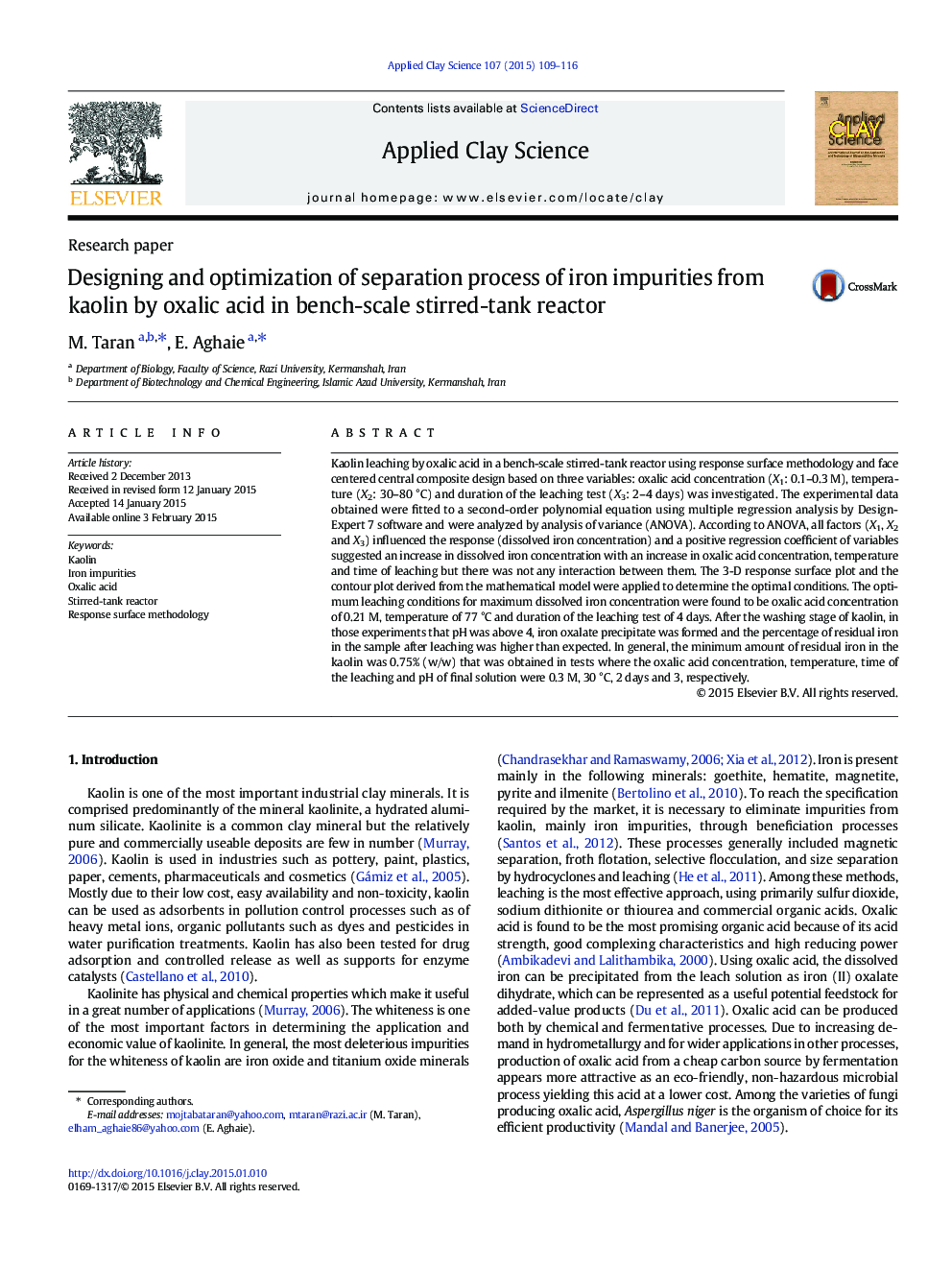| Article ID | Journal | Published Year | Pages | File Type |
|---|---|---|---|---|
| 1694534 | Applied Clay Science | 2015 | 8 Pages |
•Removing of iron from kaolin by oxalic acid in a bench-scaled stirred-tank reactor•Designing and optimization of leaching based on three variables using RSM•Increase in iron removal with an increase in experimental variables•Measuring of residual iron in kaolin after leaching and three stages washing•Removing about 65% of the total iron contents of the kaolin
Kaolin leaching by oxalic acid in a bench-scale stirred-tank reactor using response surface methodology and face centered central composite design based on three variables: oxalic acid concentration (X1: 0.1–0.3 M), temperature (X2: 30–80 °C) and duration of the leaching test (X3: 2–4 days) was investigated. The experimental data obtained were fitted to a second-order polynomial equation using multiple regression analysis by Design-Expert 7 software and were analyzed by analysis of variance (ANOVA). According to ANOVA, all factors (X1, X2 and X3) influenced the response (dissolved iron concentration) and a positive regression coefficient of variables suggested an increase in dissolved iron concentration with an increase in oxalic acid concentration, temperature and time of leaching but there was not any interaction between them. The 3-D response surface plot and the contour plot derived from the mathematical model were applied to determine the optimal conditions. The optimum leaching conditions for maximum dissolved iron concentration were found to be oxalic acid concentration of 0.21 M, temperature of 77 °C and duration of the leaching test of 4 days. After the washing stage of kaolin, in those experiments that pH was above 4, iron oxalate precipitate was formed and the percentage of residual iron in the sample after leaching was higher than expected. In general, the minimum amount of residual iron in the kaolin was 0.75% (w/w) that was obtained in tests where the oxalic acid concentration, temperature, time of the leaching and pH of final solution were 0.3 M, 30 °C, 2 days and 3, respectively.
